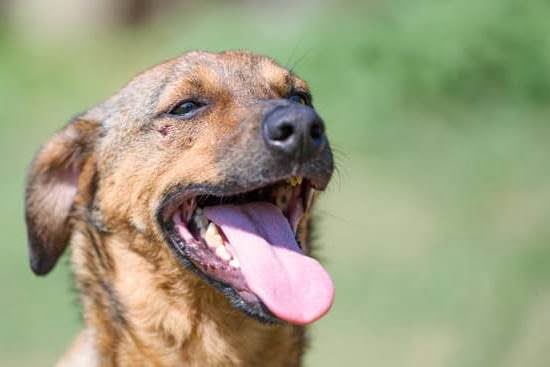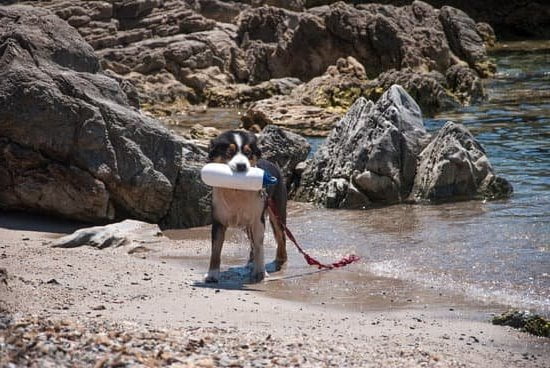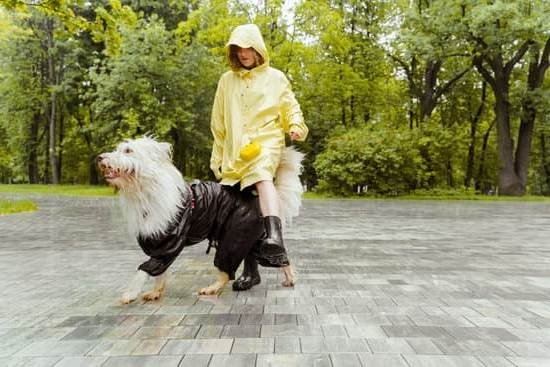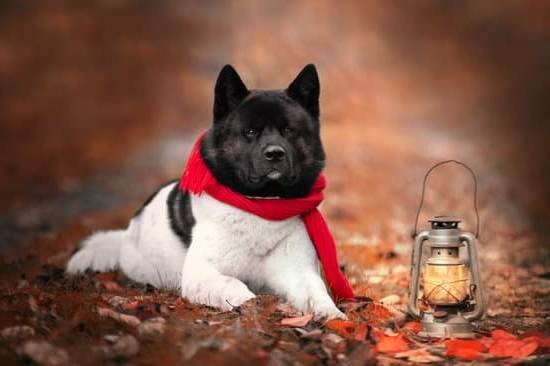Introduction
Puppy biting is quite common and is a natural part of their development. It is important to understand that bite prevention training must begin early in the pup’s life, ideally from the moment he comes to live with you. Dog owners must be proactive in providing gentle guidance and direction while their puppy is still young and impressionable. This comprehensive guide provides tips and techniques on how to teach your pup bite prevention skills and avoid potential accidents.
Understanding why puppies bite: Puppies often explore their world by mouthing or nibbling objects, including people’s hands or feet. While this behavior can be cute when done between littermates, it quickly becomes unacceptable when directed at humans as your puppy grows up. To help prevent unwanted mouthing/biting behavior, it’s important to understand how puppies learn from us and get rewarded for good behaviors. By understanding your pup’s motivations behind biting, you can better redirect his attention away from inappropriate objects and onto satisfying activities like chasing a toy ball or chewing a chew treat instead.
Training Tips:
1. Establish firm guidelines about acceptable play: Make sure everyone in the family or anyone who interacts with your pup understands what constitutes ‘gentle’ play with the puppy such as being quiet and soft-spoken when interacting with him as opposed to rough petting or tugging of his fur – which can initiate an aggressive reaction from him as he learns that this kind of dynamic is not okay with you!
2. Use rewarding reinforcements: Reward desired behaviors with consistent encouragement, such as verbal praise or food treats. You can also use toys such as stuffed animals, balls, Kong toys filled with favorite treats – anything your puppy finds interesting -to engage him in more desirable activities than mouthing/biting people’s hands or feet.
3. Redirect negative-reinforcement: Whenever you catch your pup mouthing/biting on something inappropriate (your hands, furniture etc) provide an immediate verbal reprimand (“No Bite!”) then immediately replace the person’s hand if possible – wi th a chew toy instead , guiding his mouth away from skin contact and onto where he has permission to play (his own toys) . Offering various types of rewards for good behaviors will help reinforce appropriate action in the future!
Establishing Clear Boundaries
If you are introducing a new puppy into your home, one of the challenges you may face is getting them to stop biting. It is important to differentiate between play biting, which is normal behavior for puppies as they explore their surroundings and learn from their environment, and aggression, which is an indication that the pup feels threatened or uncomfortable with certain situations. To help establish clear boundaries, never allow your puppy to bite you in play. If they do, immediately move away and take away any toys or objects they may be playing or biting with. Provide supervision at all times to ensure that your pup isn’t engaging in any unwanted behaviors such as aggressive biting. Introduce positive reinforcement techniques like treats when the puppy does something desirable such as cuddling or responding correctly to commands. Punishing your pup for undesirable behavior can be ineffective and may even increase aggression if done incorrectly. Teaching them proper bite inhibition by offering chew toys will help reduce biting overall. Furthermore, have patience; training a young pup takes time so it’s important to stay consistent with your reward-based teaching methods!
Establishing Positive Reinforcement Training Techniques
Positive reinforcement training is an effective way to discourage a puppy from biting. With this type of training, the puppy is rewarded for appropriate behavior, such as sitting instead of biting. Training with positive reinforcement can take several forms, such as treat rewards, verbal praise and petting when the puppy exhibits desirable behavior. On the other hand, punishment-based methods are not recommended because they often result in fear and aggression in the dog. To ensure the puppy learns that biting is unacceptable, reward it every single time it refrains from engaging in biting behaviors.
Another tip for training a puppy not to bite is to establish rules and boundaries early on. Dogs need to understand that certain actions aren’t acceptable before they can learn what behaviors are okay. Establish boundaries by providing clear commands such as “no biting” or “sit” and make sure to consistently enforce those rules with correction when necessary. Puppies often follow rules well when given consistent structure with clear expectations and rewards for good behavior. Playtime should also be monitored closely so that the pup understands which types of play are allowed (such as fetch) but also which behaviors are unacceptable (biting). Lastly, providing plenty of chew toys can help curtail puppies’ desire to bite your hands or furniture while also encouraging them to direct their natural chewing instinct appropriately
Tips for Reducing Stress and Stimuli That Lead to Biting
1. Provide plenty of mental and physical stimulation: Provide your puppy with enough physical exercise and mental stimulation every day. Activities such as playing games like fetch, going on walks, and providing puzzle toys can help keep your puppy’s mind and body engaged throughout the day.
2. Limit play time: While it is important to give puppies ample time to exercise and socialize, it is also important to make sure that playtime does not become too rough or unpredictable. When playtime becomes too rough or unstructured, it can lead to anxious or aggressive behaviors. Therefore, limit the amount of playtime you allow your puppy in order to prevent any potential problems arising from overstimulation.
3. Use positive reinforcement techniques: Positive reinforcement techniques can be used to encourage good behavior when training puppies not to bite. Rewarding positive behaviors with treats, praise, toys, and affectionate pats can help reinforce desired behaviors for dogs as young as puppies. It is important not to punish your puppy for unwanted behavior – this could have a negative effect on their overall learning experience.
4. Be consistent: Consistency is key when teaching puppies proper behavior in order to reduce stress caused by biting tendencies. As soon as you start working with your pup, create a routine and stick with it diligently so that your puppy learns the boundaries of acceptable behavior through repetition and practice – this will give them clear guidelines for how to behave properly and confidently around other people or animals outside the home environment.
Identifying Possible Causes of Puppy Biting
Puppy biting can have many sources. It’s important to take a step back and assess the situation to identify possible causes and correct the behavior. First, puppies may bite out of curiosity or as a form of exploration, particularly during teething. Next, excessive play and excitement can cause puppies to become overly hyperactive and resort to mouthing or biting. In addition, some puppies will resort to aggression if feeling threatened or when defending their toys or food. Finally, dogs can simply lack socialization skills or learn bad habits from other dogs they’ve been exposed to, causing them to use inappropriate behaviors such as barking and aggressive biting. Once you’ve identified the cause of your puppy’s biting it’s important to use appropriate techniques for correcting the behavior like setting boundaries, providing chew toys plus verbal reinforcement like praise. Having patience and consistently disciplining your pup are essential for successfully training him/her out of any unwanted behaviors.
Managing Puppy Biting Through Competition Activities
One way to manage puppy biting is through competition activities such as playing tug or fetch. During these activities, puppies instinctively try and pull or grab the object with their mouth. These competition activities can be used to teach puppy self-control and redirect their biting impulses. Puppies should be taught that they are only allowed to use their mouths when instructed by their owner during a game of tug or fetch. Additionally, it is important for owners to always praise the pup for using appropriate behavior during these activities. It is also helpful for owners to provide toys as an alternative outlet for biting impulses, so puppies have something else available to bite that will not be damaged by sharp teeth. Learning good behaviors at an early age will help the pup develop into a well-mannered dog that is more likely to obey commands and get along better with other animals and humans later on in life.
Understanding Your Puppy
The key to preventing bites from a puppy is to ensure that you understand their needs. Training puppies requires patience and consistency, as well as understanding why they might be biting. When puppies bite, it’s important to provide them with positive attention, redirecting their energy towards acceptable behaviors. You should also provide consistent rewards for good behavior and discourage bad behaviors.
When training your pup, it’s important to remember the importance of socialization and proper exposure to different environments and situations. Socializing a puppy helps teach them how to interact properly with other animals and people in order to learn appropriate bite inhibition. Socialization also teaches them how to greet new people and objects in appropriate ways.
In addition, it’s important to always keep safety in mind when dealing with biting puppies. It is essential that you use appropriate toys or objects that are designed specifically for teething puppies — avoid small objects they could choke on such as marbles or coins — so they don’t accidentally bit any sensitive areas of the body such as hands or feet. Also, never physically punish a puppy for biting; instead reward positive behaviors like affection or treats whenever possible so he knows which behavior is desired. Finally, always monitor playtime when children are involved – never leave young children unattended near an active pup!
Proven Training Strategies for Curbing Unwanted Puppy Biting
One of the most common issues that puppy owners encounter is unwanted biting. Biting can be dangerous and cause harm if not addressed immediately, but luckily there are several effective strategies you can use to help your pup learn appropriate behavior.
One strategy is to redirect your pup’s attention the moment they bite. Whenever you notice your pup turning to bite a person or object, call their name, clap your hands, or use another verbal command to distract them from doing so. Additionally, avoid roughhousing and wrestling with young puppies as this kind of play can reinforce biting instead of discouraging it.
Provide rich toys for them to chew on and play with that reward their bites and encourage non-aggressive engagement. For example, a stuffed toy with sewn in treats is an ideal way for your pup to spend energy chewing in a positive way. Lastly, reward good behavior with small treats or praise when they exhibit acceptable patterns like gentle chewing or playing without biting altogether. This will incentivize further progress so they more quickly adopt appropriate behaviors over time!
Combating Falsehoods
When it comes to puppies, biting can often be a source of frustration for dog owners. While in some cases biting may represent a misbehavior that needs to be corrected, there could actually be a more fundamental problem at play. When it comes to puppy biting, much of what we hear is simply not true. Before investing in traditional command-based training techniques, it is important to understand the context and make sure you are addressing the real problem.
For example, many people believe thatCommand-Based Training will address aggression or other forms of misbehavior. Unfortunately, this method only reinforces a learned behavior and ignores the root of its cause. Instead, when dealing with a puppy’s biting issue it is important to search out what has caused the pup to become fearful or excited around certain stimuli. Additionally, depending on the age of your pup, biting can also simply represent the teething process. In this case very different solutions must be implemented like providing numerous soothing elements for your pup such as stuffed toys that provide emotional comfort as well as alternatives for chewing on like durable rubber toys and sticks.
There may even come times when professional help is necessary in order to address deep rooted problems like fear or anxiety issues which traditional Command-Based Training cannot resolve alone. Regardless of how canine misbehavior manifests itself you must try and dig deeper into what’s causing it before attempting any form of training whatsoever.
Conclusion
It is important to remember that dog biting is part of the normal puppy growth process. Dogs use their mouths to explore and understand their environment, so it is essential that dogs receive proper training while they are still young. Proper training consists of rewarding good behaviors and correcting bad ones. If a puppy begins to bite frequently, it should be addressed quickly and consistently by providing distractions such as toys or treats, redirecting the biting behavior with verbal correction, or teaching the puppy positive commands such as “sit” or “down” in order to discourage biting. Additionally, ensuring that puppies remain socialized and avoiding situations where puppy agitation could lead to biting will help avoid potential problem situations. Lastly, offering plenty of praise for good behavior can greatly reduce the likelihood of negative behaviors reoccurring in the future. These dog training tips for preventing puppy biting will not only keep puppies safe, but also help create calm and well-mannered adult dogs in the future.

Welcome to the blog! I am a professional dog trainer and have been working with dogs for many years. In this blog, I will be discussing various topics related to dog training, including tips, tricks, and advice. I hope you find this information helpful and informative. Thanks for reading!





